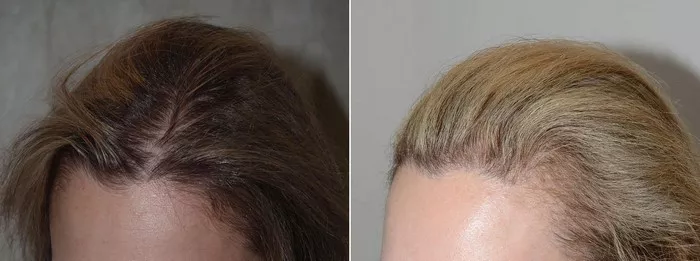Hair transplants have become an increasingly popular solution for those dealing with hair loss. While the procedure itself has evolved significantly over the years, prospective patients often express concerns about the visibility and permanence of the resulting scars. In this article, we delve into the factors that influence how long hair transplant scars last and what patients can expect in terms of their appearance over time.
The Nature of Hair Transplant Scars
Hair transplant procedures typically involve the extraction of hair follicles from a donor area, usually the back of the scalp, and their transplantation into areas with thinning or no hair. The scars that result from this process depend on the technique used – commonly Follicular Unit Transplantation (FUT) or Follicular Unit Extraction (FUE).
1. FUT Scars: FUT involves removing a strip of tissue from the donor area, leaving a linear scar. The scar is often a concern for patients as it can be more visible, especially if they prefer shorter hairstyles.
2. FUE Scars: FUE, on the other hand, extracts individual follicular units, leading to tiny, dot-like scars scattered across the donor area. While these scars are less conspicuous, they cover a larger area, potentially causing concerns for those who prefer shorter haircuts.
Immediate Postoperative Period
In the days immediately following a hair transplant, patients can expect some scabbing and redness in both the donor and recipient areas. Proper postoperative care is crucial to minimize the risk of infection and facilitate the healing process.
1. Donor Area Healing: FUT scars will typically be sutured, and patients may need to be cautious about their activities to avoid stretching the scar. FUE scars, being smaller, generally heal faster, and patients can usually resume regular activities sooner.
2. Recipient Area Healing: While the focus of this article is on donor scars, it’s essential to note that the recipient area also experiences temporary redness and scabbing. However, these effects are generally short-lived and gradually fade within a few weeks.
Short-Term Scar Evolution
In the first few months after a hair transplant, patients may notice changes in the appearance of the scars. The scars often become more pronounced initially before gradually fading.
1. FUT Scars: The linear scar from an FUT procedure will undergo significant changes in the first six months. Initially, it may appear as a red or pink line, but with time, it usually lightens in color and becomes less noticeable.
2. FUE Scars: The dot-like scars from FUE may also be red or pink initially, but they tend to fade relatively quickly. As the hair in the donor area grows back, it often conceals these scars effectively.
Long-Term Scar Appearance
The long-term visibility of hair transplant scars is influenced by various factors, including the patient’s healing process, skin type, and the surgeon’s skill.
1. Skin Type: Individuals with lighter skin tones may notice scars more than those with darker skin tones. However, the contrast tends to diminish over time as the scars fade.
2. Hair Growth: As the hair in the donor area grows back, it contributes significantly to concealing scars, especially in FUE procedures where the scars are scattered. Patients often find that with longer hair, the scars become virtually undetectable.
3. Scarring Techniques: The surgeon’s skill plays a crucial role in minimizing scars. Advanced closure techniques in FUT procedures and precise extraction methods in FUE can contribute to less visible scarring.
See Also: After Hair Transplant: Does Hair Grow Back in the Donor Area?
Conclusion
In conclusion, the longevity of hair transplant scars varies from person to person and depends on multiple factors. While immediate postoperative care is essential for optimal healing, patients should understand that scars evolve over time and often become less noticeable with proper care and patience.
Patients considering a hair transplant should have realistic expectations regarding scarring and openly discuss their concerns with their surgeon. With advancements in surgical techniques and a commitment to postoperative care, the longevity of hair transplant scars can be significantly minimized, allowing individuals to enjoy the aesthetic benefits of restored hair without undue worry about visible scarring.


